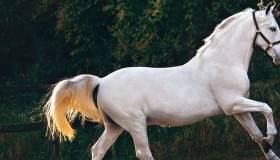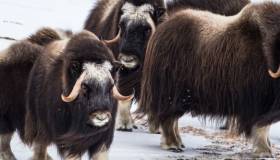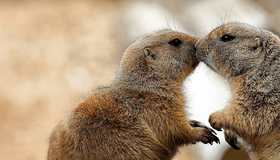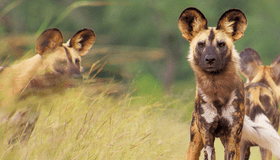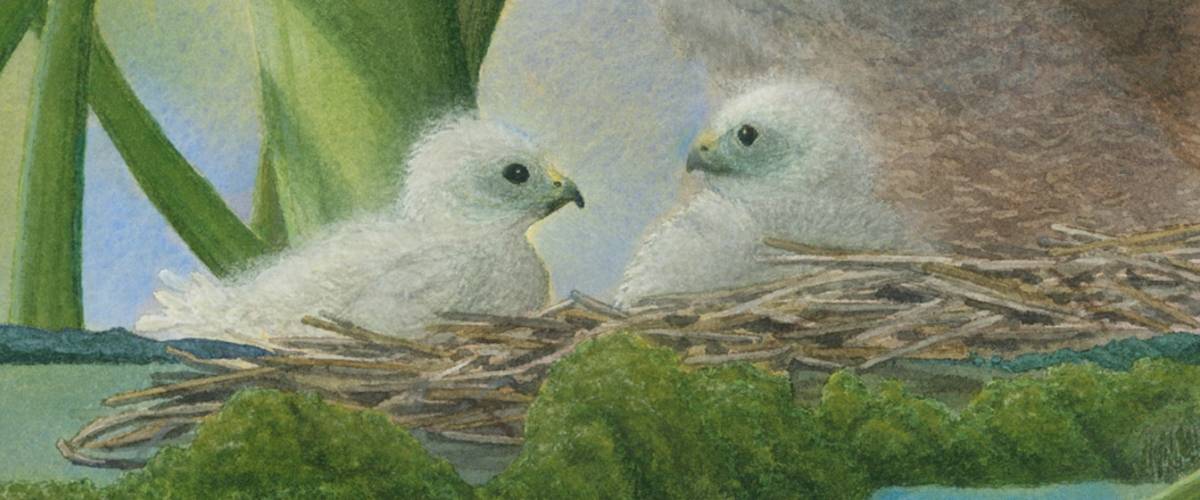
June 28, 2018 – Rebecca Richman has a secret superpower – the ability to create art that connects people with nature. Her latest painting draws attention to the plight of the Ridgway’s hawk. While many people aren’t familiar with this rare and endangered species, Rebecca knew about this bird’s challenges through her work at Morris Animal Foundation where she is a long-time employee and nature-loving advocate.
In addition to her work at the Foundation, Rebecca is part of a group of international artists that promotes conservation through art. Their latest collaborative project is creating a collection of paintings, including the Ridgway’s hawk image Rebecca created, representing birds listed on the International Union for Conservation of Nature’s (IUCN) Red List of threatened species. The group’s goal is to raise awareness for bird conservation and the rapid decline of many feathered creatures around the world. According to IUCN sources, approximately one in eight bird species is currently threatened with extinction.
“This project helps people visualize how we are connected to nature and to each other. If you look closely at my painting, the beautiful islands of the Los Haitises National Park in the Dominican Republic are supporting the nest as a symbol of how important this area is to the hawks,” Rebecca said.
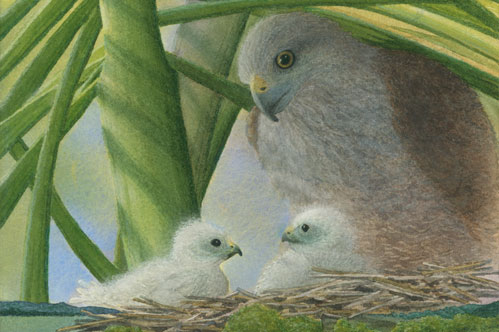
Rebecca closely follows Morris Animal Foundation’s wildlife research, including its partnership with the Peregrine Fund, whose pivotal work is racing against time to save the Ridgway’s hawk from extinction. Peregrine Fund researchers have taken on the Ridgway’s hawk’s main predator; the small but deadly botfly. Botfly infestations are taking an enormous toll on newly hatched chicks. This decrease in healthy fledglings is severely diminishing the hawk’s viability and healthy population numbers. But hope in the form of scientific research and education is now turning the tables on this parasitic predator.
Dr. David Anderson, Peregrine Fund director and researcher, provided Rebecca with data about ongoing botfly research and pictures of the birds in the wild before Rebecca even dipped her brushes in her paint. He shared how his team identified a novel way to fight botfly nest infestations involving a common and safe flea and tick insecticide that works exceedingly well in the field. Peregrine Fund researchers found that treating the nests and nestlings several times during the breeding season significantly increased the fledglings’ chance of survival; 33 new nestlings survived and thrived in one nesting season because of this research – a boon for the species.
However, the downside of this method was how much time and effort was required for staff and volunteers to treat and monitor nests three to five times during the breeding season. Researchers immediately looked for an easier, more sustainable way to combat the botflies.
Today, Peregrine Fund researchers, supported by funding from Morris Animal Foundation, are testing a longer-lasting insecticide that only requires a single nest application prior to egg laying. This new strategy is proving to be more practical for treating nests of Ridgway’s hawks, freeing up the biologists’ time so even more nests can be treated and more chicks can be saved.
“Ridgway's hawks are only found in isolated areas including this national park; one of the bird's last strongholds due to habitat loss, human disturbance and botfly infestation,” Rebecca said. “Right now, the future of the Ridgway’s hawk is precarious, but I’m hopeful this research will be successful in getting rid of botflies to restore the health and population of these beautiful birds.”
Visit Rebecca’s website to learn more about how she uses art to spread the message of conservation for all the animals with whom we share this amazing and diverse planet.

